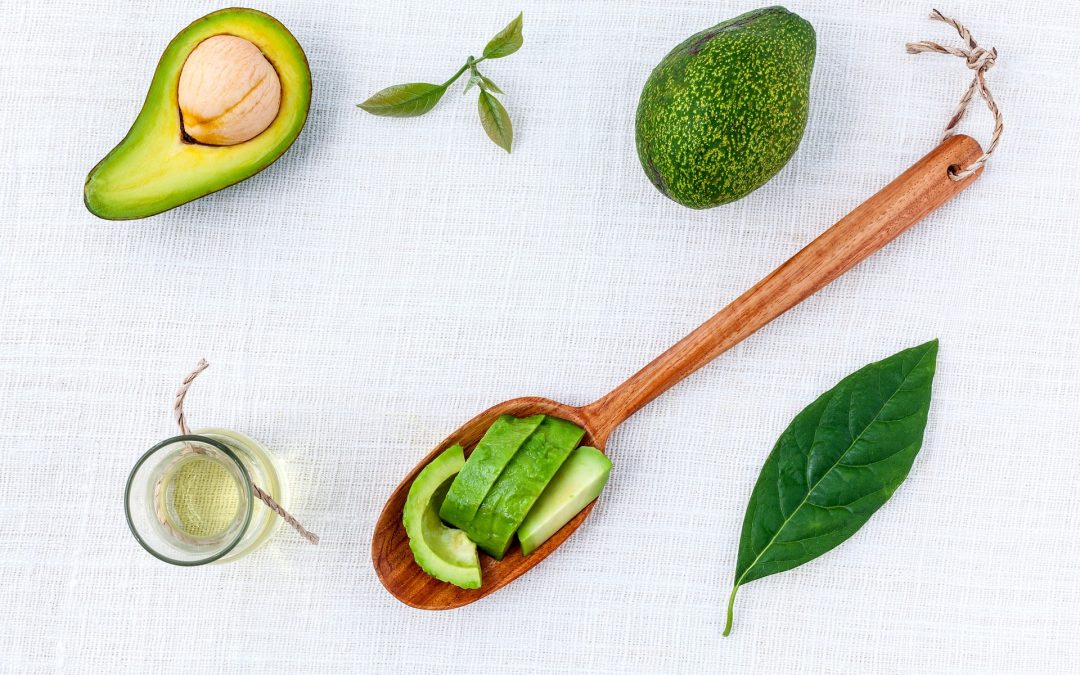
by Leslie Moldenauer | | Essential Oils
There any many essential oils that can benefit us when used stress. Why reach for Bergamot essential oil to support our mental wellness? Enjoy this complimentary essential oil monograph.
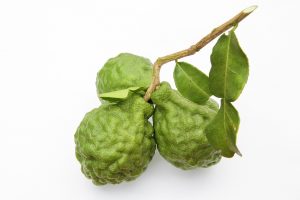
Method of extraction– Cold-pressed expression of medium ripened fruits
Blending factor– Top note. Bergamot has an initial intense heady aroma but burns off quickly as we would expect from a top note oil.
Aroma mantra- “I am always deeply centered and balanced, just as I am meant to be.”
Superstar qualities- 1. Limonene-Antimicrobial qualities provide a wonderful pick-me-up like other citrus oils. 2. Linalyl Acetate- Anti-spasmodic, provides relaxation and emotional balancing. 3. Linalool-Calming sedative properties. These three chemical constituents provide a beautiful synergy for our emotional wellbeing.
The details- Bergamot’s citrusy aroma blends well with many other essential oils. Its therapeutics makes it superior for our wellness. Reach for it when you are feeling burnt out as it is highly supportive of mental and physical fatigue (1). Many essential oils are adaptogenic in nature, meaning they meet you where you are; providing balance. Bergamot uplifts while providing peace, so it is indicated during times of situational anxiety and depression. Bergamot essential oil is a great supporter of our emotional and mental wellness.
Biggest myth- Skin reactions are a sign of detoxification. Not true. Bergamot oil is the most phototoxic of any essential oil. Do not apply to the skin and go out into the sun or lie in a tanning bed. A skin reaction from this oil or any other is not a sign of detoxification. Fun fact- Bergamot is used extensively in the food and flavoring industry. Fancy a cup of Earl Grey tea?
On a personal note- I have found great success using bergamot in a therapeutic inhalation during periods of SAD (seasonal affective disorder).
Blends well with-All other citrus oils, black pepper, chamomile Roman, clary sage, helichrysum, jasmine, lavender, niaouli, patchouli, peppermint, pink pepper, and ylang-ylang.
Safety considerations-According to the International Fragrance Association (IFRA), the maximum ratio for applying bergamot to the skin is 0.4%. The IFRA states that “The Standard is set due to the phototoxic effects of the material. The limit only applies to applications on skin exposed to sunshine, excluding rinse-off products (2).”
What do the studies say? (Studies shared in their entirety for your review)
1. Essential Oil Inhalation on Blood Pressure and Salivary Cortisol Levels in Prehypertensive and Hypertensive Subjects- The conclusion of this study was the inhalation of bergamot essential oil had immediate and positive effects on blood pressure and salivary cortisol levels (cortisol is an indicator of high levels of stress). Click here to discover the details.
2. The use of aromasticks at a cancer center- Learn how various essential oils are being used in cancer centers to help assist in helping patients be more comfortable, including bergamot essential oil. Click here to discover the details.
3. Bergamot Essential Oil Attenuates Anxiety-Like Behaviour in Rats-This study showed the undeniable antianxiety effects of bergamot essential oil as it was illustrated here with rats. Click here to discover the details.
Like so many practices in life, I encourage you to become educated on the proper use of essential oils. When using them, please do so cautiously, understanding that there is often misinformation on the internet. You can be assured that I support only educated and proven resources. While essential oils should not be feared they should be respected and used properly to ensure the safety of the individuals using them.
Please note that I am not a medical practitioner. The content of this website is provided for general informational purposes only and is not intended as, nor should it be considered a substitute for, professional medical advice. Do not use the information on this website for diagnosing or treating any medical or health condition. If you have or suspect you have a medical problem, promptly contact your professional healthcare provider. By using this website, you assume full responsibility and liability for your own actions.
References
(1) Watanabe, E., Kuchta, K., Kimura, M., Rauwald, H. W., Kamei, T., & Imanishi, J. (2015). Effects of Bergamot (Citrus bergamia (Risso) Wright & Arn.) Essential Oil Aromatherapy on Mood States, Parasympathetic Nervous System Activity, and Salivary Cortisol Levels in 41 Healthy Females. Complementary Medicine Research, 22(1), 43–49. doi: 10.1159/000380989
(2) IFRA Standard, Bergamot oil expressed. https://ifrafragrance.org/standards/IFRA_STD48_0164.pdf
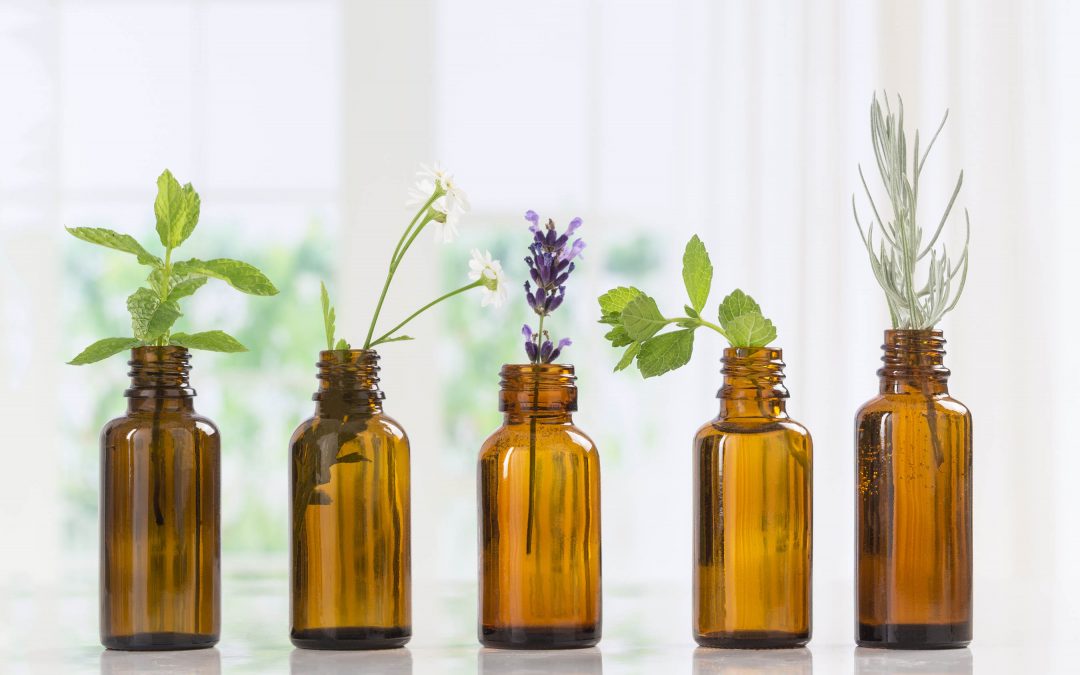
by Leslie Moldenauer | | Essential Oils
How can we navigate difficult changes with essential oils? Chronic worrying can lead to anxiety, panic, and essentially leave your nervous system unregulated and completely on edge. Sometimes you may feel like it is an endless roller coaster that you cannot get off of.
The one thing that causes concern for our overall health, is that a chronic worrier has their fight or flight response continually activated, we can easily fall outside of fight or flight, and into freeze. This falls into a term called allostatic load, or overload as the case may be.
What is Allostatic Load?
Allostatic load is “the wear and tear on the body” which accumulates as an individual is exposed to repeated or chronic stress (1).
I think we are all there right now. At least at some point in our day. The sympathetic nervous system switch is stuck in the on position, resulting in symptoms (not all-inclusive) such as:
-Physically and mentally unable to sit and relax
-Anxiety (heart palpitations/increased BP, irritability, headaches, insomnia, startle easily)
-Acid reflux, stomach aches, poor digestion,
-Chronic muscle tightness and pain
-Increased skin rashes
-Lack of productivity, forgetfulness, hopelessness, apathy, worry, paranoia
-The sensation of a lump in your throat or increasing clearing of your throat (related to acid/GERD)
I had a number of these over the last couple of weeks. I have a very clear pattern in my personality, my soul……worry…..anxiety…..introspection….take massive action!
This action is not always about work, not always a to-do list or even goal setting….with this pandemic it is choosing to let go. Choosing to stop gripping. Many people are talking about wanting the world to go back to normal. The world will never be the old normal, but the new. That is actually beautiful in many ways….but there is also a lot of uncertainty and unknown. That is my weakness, but I am slowly making it my greatest strength.
Why? How?
The Universe has always provided for me, always. All I have ever had to do was ask. Not once, not twice….but consistently.
Bring in the practice of abundance, manifesting, asking, praying (in whatever ways works for you), in the grand scheme of things…It is keeping your vibration high. Will you stay there all of your waking hours? A great big NO. We are human, these are trying times….BUT we can let the feelings in, be gentle and compassionate with ourselves..hug ourselves…love ourselves…and move onto the next moment.
How can we move from it? By activating our parasympathetic nervous system as much and often as we can. Read more about that here.
It requires a new way of thinking and living!
It requires living with complete self-awareness.
At times, it requires assistance.
Using Essential Oils to Support our Emotional Wellness
Bergamot (Citrus bergamia) Reach for this gem to help uplift your mind and provide much-needed respite during times of situational sadness and lows.
Black pepper (Piper nigrum) Can assist during the winds of spring when you are beginning to feel ungrounded and anxious.
Chamomile, Cape (Eriocephalus punctulatus) This is by far my favorite of the chamomiles and get help to incite calm when there is great overwhelm.
Cistus (Cistus ladaniferus) also called Rock Rose Is my oil of choice for shock and trauma. It has an affinity for the nervous system, great to use during tumultuous times.
Helichrysum (Helichrysum italicum) can really go to bat for you if you are feeling anxious and worried. It increases feelings of compassion for self and others with its beautiful honey-like aroma.
Laurel leaf (Laurus nobilis) Having trouble thinking positively, or finding the silver lining? Spend some time with laurel leaf to help turn that around.
Mandarin red (Citrus reticulata) Feeling stuck in freeze mode? Do deep breathing exercises with mandarin red by your side. The aroma will help when you are feeling stuck.
Palo Santo (Bursera graveolens) Call in protection during meditation for yourself, your family, and the earth using Palo Santo. The aroma helps bring great focus and concentration, enhancing meditative practices.
Ruh Khus (Vetiveria zizanoides) This green and heady essential oil, also called wild vetiver is amazing artfully blended to help with irritability, overthinking, and promotes restful sleep.
This is just a very small portion of the essential oils that we can look to help us in times of need. Check out the many others in my latest book, grab your copy today.
Reference
(1) Allostatic load. (2020, March 13). Retrieved from https://en.wikipedia.org/wiki/Allostatic_load
Like so many practices in life, I encourage you to become educated on the proper use of essential oils. When using them, please do so cautiously, understanding that there is often misinformation on the internet. You can be assured that I support only educated and proven resources. While essential oils should not be feared they should be respected and used properly to ensure the safety of the individuals using them.
Please note that I am not a medical practitioner. The content of this website is provided for general informational purposes only and is not intended as, nor should it be considered a substitute for, professional medical advice. Do not use the information on this website for diagnosing or treating any medical or health condition. If you have or suspect you have a medical problem, promptly contact your professional healthcare provider. By using this website, you assume full responsibility and liability for your own actions.
Categories of Grief & How Using Essential Oils Can Help
Reference
(1) Allostatic load. (2020, March 13). Retrieved from https://en.wikipedia.org/wiki/Allostatic_load
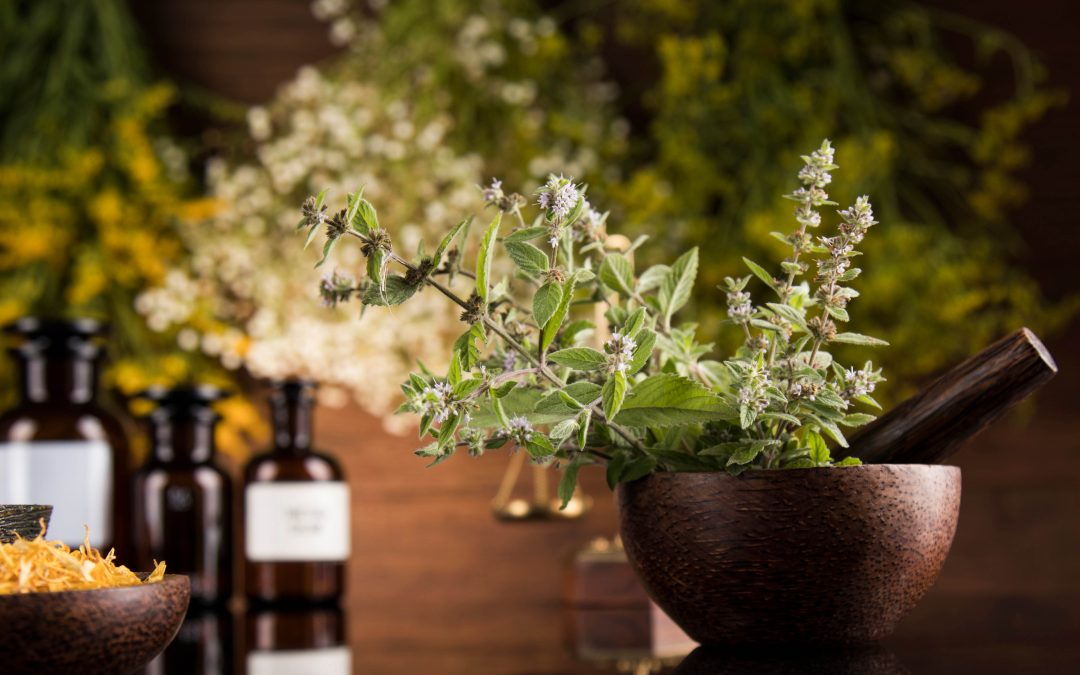
by Leslie Moldenauer | | Essential Oils
As I sit here beginning to write, the sun has shown up, and I notice how quickly that effects my mood for the better. During times of uncertainty, we are invited to go inside and notice the smallest of things to provide calm. How can we use holistic therapies to support us during difficult times?
Am I enjoying every moment of the quarantine? Definitely not. What I am doing is taking the time to work through my own life’s struggles and challenges. I am focusing on how I treat the world around me and about the importance of friends and community. In this interim, I have definitely had to step up my own self-care in order to be healthy.
I did a LIVE in my group today (3/21/2020), just to talk about a few of the things that I am doing/consuming to calm my nervous system and keep my immunity in tip-top shape. I thought putting it in a blog for all of my readers would be beneficial.
How can we use Holistic Therapies During Difficult Times
Nutrition
In order to keep my immune system working hard for me, I aim to keep the detoxification system of my body running strong. I do this by completely eliminating dairy, grains, and cutting back on my consumption of meat. In addition, I am making sure to up my intake of fruits and vegetables from my norm and making sure I stay hydrated.
Outside of the things I eliminate, I place the majority of my focus on how I can add nutritious things, not necessarily taking anything away. I cook with more herbs, drink tea, and consume a variety of herbal tinctures.
I work to keep my lymphatic system strong by performing daily dry brushing, lymphatic drainage massage, and try not to remain sedentary for too long.
Vitamins and Minerals
If you have been doing your research, you know that Vitamin C given intravenously has shown great promise for CV. I have made sure that the whole family is taking the next best thing, liposomal vitamin C, for optimal absorption. The idea of Vitamin C is that it is an antioxidant that may help prevent cytokine-induced damage to the lungs (1). Experts are now using it to combat damage in the lungs, much like has been done historically for incidences of whooping cough (2).
Keep in mind that in the case of vitamin C as it is a water-soluble vitamin, once your body absorbs the maximum amount that it can, the remaining will end up as expensive urine. Therefore, split up the dosage throughout the day. An early sign that you have consumed enough is via bowel tolerance.
*It is worth mentioning as many of you are followers due to the many safety articles that I share on essential oils, do not replace this with citrus essential oils. There are negligible amounts of vitamin C, at best, and it is not a safe daily practice. Read more about that subject, here.
Below are a few places for you to get liposomal vitamin C.
Institute for Progressive Medicine
Pure Encapsulations
In addition to liposomal C, I make sure to take probiotics, vitamin D, and a quality multivitamin that is specific to supporting my endocrine system.
Herbs
I have a variety of herbs sitting in 190 proof alcohol on my windowsills around my home for various reasons. With all the hubbub surrounding elderberries and elderberry syrup, I will address that first. In order to not recreate the wheel, I will share a few quality references on the subject below. It is important to pay attention to the research in which individuals are making their conclusions about something. In the case of elderberries, the recommendations were given off one lone study, in my opinion, that is not enough.
As an aromatherapist, I am very well versed in shoddy research, incomplete research, or when something looks promising but additional research is required. The bottom line is that elderberries are antiviral, they are not immune stimulants like we see in echinacea and garlic, for example. There is no reason to avoid taking elderberry syrup at this time as a preventative measure or to combat the cold or flu unless you are already dealing with an autoimmune illness. Use discernment with your own situation, always.
Resources on Elderberries
Gaia Herbs
Dr. Patrick Flynn
Above and Below Apothecary
As an alternative or addition to elderberries, and two of the best things and easiest to obtain would be astragalus (immune modulator) and licorice (antiviral).
Herbs to reach for to soothe the central nervous system (nervines) include lavender, chamomile, passionflower, lemon balm, hibiscus, valerian, oat tops, catnip, and skullcap (not all-inclusive).
Adaptogens can go a long way to help when we are under an assault from stress, which many of us are feeling right now. A few of those include ashwagandha (my preference), Rhodiola, eleuthero root, holy basil (tulsi), cordyceps, Schisandra berries, and Asian/American ginseng.
*As with all herbal recommendations, please research further to make sure the recommendation is appropriate for your medical history.
Essential Oils
There are a wide variety of essential oils that you can reach for during this time for emotional support, and a variety of therapeutic purposes.
My goal here is to provide you with as many resources as possible for you to read and listen too.
This first link is to a podcast interview I participated in with Samantha Lee Wright of The Essential Oil Revolution, where we discuss emotional healing.
The second is my latest book, Emotional Healing with Essential Oils where I give details on my top 50 oils for Emotional Healing, and 100 Applications and Remedies to blend at home, safety included!
This last link is to Stillpoint Aromatics, owned by my dear friend Virginia Joy Musacchio. I trust her and her essential oils explicitly and know that she puts positive energy into every pour. Her website lists oils by the therapeutic property, which makes adding items into your cart a breeze.
Stay tuned for next week’s blog where I go over deep breathing exercises and may even record myself so we can do it together. The power of our breath is palpable and extremely helpful during hard times.
Until then, wishing you all abundant health and happiness.
Xo Leslie
Like so many practices in life, I encourage you to become educated on the proper use of essential oils. When using them, please do so cautiously, understanding that there is often misinformation on the internet. You can be assured that I support only educated and proven resources. While essential oils should not be feared they should be respected and used properly to ensure the safety of the individuals using them.
Please note that I am not a medical practitioner. The content of this website is provided for general informational purposes only and is not intended as, nor should it be considered a substitute for, professional medical advice. Do not use the information on this website for diagnosing or treating any medical or health condition. If you have or suspect you have a medical problem, promptly contact your professional healthcare provider. By using this website, you assume full responsibility and liability for your own actions.
References
(1) Lichtenstein, K., & MedicineNet Health News. (2020, March 9). Can Vitamin C Prevent and Treat Coronavirus? – MedicineNet Health News. Retrieved from https://www.medicinenet.com/script/main/art.asp?articlekey=228745
(2) http://citeseerx.ist.psu.edu/viewdoc/download?doi=10.1.1.666.2209&rep=rep1&type=pdf
Mindfulness and Meditation, How Do We Begin to Shift Our Lives?
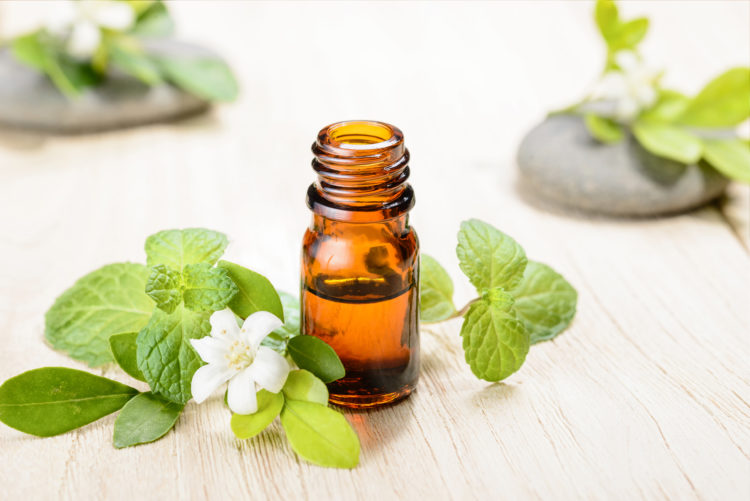
by Leslie Moldenauer | | Essential Oils
Essential oil safety is a hot topic, understandably so with its popularity. I have hit on many topics over the years and decided to share my top essential oil blogs of all time with you. Twenty topics that have been seen and shared thousands of times, in the ease of one place.
Essential Oil Safety…..There is often much debate about whether we can utilize aromatherapy in the birthing room, or during pregnancy at all. Is it safe? How do we do it? Let’s talk about what we need to consider- Utilizing Essential Oils During Labor and Delivery
The essential oils that we know, and love are derived from plants, but this does not necessarily mean that the therapeutic benefits or uses from the plant to essential oil are the same. In many cases, this does not hold true. There are many recipes online utilizing essential oils that do not honor chemistry and do not focus on safe use. Sustainability is also a massive concern as more and more people are stepping into the essential oil community every day. It is not necessary to use oils every day, or in everything. When we see a recipe shared online, we must ask ourselves if it is necessary, shifting the way we currently see these beautiful resources.
As women, “most” of us are not prepared for motherhood in the way I am about to discuss. Other than books and articles preparing us for Baby, such as the best-seller, “What To Expect When Expecting,” there is not much at all by way of truly preparing us moms for this huge life shift. I am speaking emotionally, mentally and physically. We can find information in books regarding cracked nipples, perineum tears, how long to wait before sex, stretch marks and hemorrhoids, but ladies; we need so much more than that!
Why Is It That Essential Oils Don’t Always Work? Does this topic surprise you? It is true, there are times that essential oils do not work as we think they should, and many instances where what works amazingly well for one individual does not for another. There are a few points that I want to make today on this topic, so let’s get started!
It becomes very challenging to know whom to believe when there are individuals and ‘health gurus’ claiming this to be factual, so I think it is important that I pull this myth apart. I have spent a great deal of time researching this topic. I will be simplifying and summarizing it for you today. It is time to put this idea to rest.
Drawing down a fever is not something that is recommended, as a fever is a sign that our immune system is working as it should be to help us get well. Rather than make my case for why you would or would not want to lower a fever, I want to cover the various ways in which we can work to make our kids a bit more comfortable while supporting their immune system to fight whatever germs are trying to take hold.
As someone that focuses on essential oil safety above all else, I tend to talk about why specific oils or methods of use are not safe. Today I want to shift focus to what essential oils are safe and look at them in a bit of detail. Empowering and helping are two words that are very important to me and my business…because if I do not support you to feel empowered to help your family, your children, and yourself..then what have I done? Fear is not where it’s at, so let us begin!
Confirmation bias is a propensity to search for or interpret information that we find in a way that confirms one’s preconceptions. In other words, when performing research online or at the library or other learning institutions, the individual doing the research has already made their decision about the topic before they have begun their search. Rather than looking to find “the truth” so to speak, they are looking for information that agrees with what they already think!
Aromatherapists have written articles about the safety of the constituent 1,8 cineole, specifically Eucalyptus radiata, Eucalyptus globulus, and Eucalyptus smithii. You’ll read plenty of articles as to why this constituent is not safe for children and not to use it at all under the age of 10. This is not, however, an accurate statement.
There are times where we all fall suspect to confirmation bias when it comes to what we are told in regard to natural remedies. We may know that there are indeed specific benefits to a remedy, we may have even experienced a few of them firsthand, but those benefits can oftentimes be extrapolated beyond what is scientifically shown. Do Epsom salts really work?
The variety of choices for a holistic first aid kit is quite exciting for the DIY’er in you and goes well beyond essential oils. Just about anything can be handled well with holistic remedies, and there are a plethora of options. I will be going over a few of those options today. If we have the choice of handling things at home and not have to travel to a doctor’s office where there is oftentimes a myriad of germs, let’s give it a go, right? I think it is important to understand when getting medical care is needed, but it is not always needed.
There have been many blogs stating that essential oils are great for our gut health and that they provide us with a healthy microbiome. The issue with statements like these is that people walk away from reading these articles thinking that essential oils work much like a prebiotic or probiotic….when that has yet to be proven. With an education in Aromatic Medicine, I can see how these statements or claims are somewhat like a telephone game. My goal is to help you see what I mean by that. Let’s take a look at our gut health…one of my favorite topics, and how essential oils can play a role. It’s not what you think!
This article will be speaking to aromatherapy use during pregnancy and beyond into the nursing years. I decided to write about this because there are a lot of misconceptions out there. Pregnancy is a delicate time, especially during the first trimester, and as we know that chemical constituents in essential oils pass the placenta, even though only in minute amounts, so safety needs to be addressed.
Is witch hazel an emulsifier? Is witch hazel a preservative? Discover its uses and limitations.
Children are much more sensitive to essential oils and aromas in general, but they can also benefit greatly from their therapeutic uses. There are a number of things that parents need to know before using them to ensure the safety of their children. Looking up a blend or recipe online is not the best way to use your oils. Let’s cover a few things that you may or may not already know in order to keep your little ones safe.
I felt that it was important to address this topic in more detail as it is shared so easily without much understanding of the safety issues involved. It is recommended to avoid fennel essential oil during pregnancy and lactation, and utilize caution with the herb in levels more than what would typically be consumed in food. Congratulations to all mom’s out there embarking on a beautiful time with your new little bundle of joy.
What is an adverse reaction to an essential oil? Would you know what to do if you or your child had an adverse reaction to an essential oil or oil blend? Do you know what an adverse reaction looks like? I will be covering a few of those here in hopes to make you more aware of what that might look like, and what to do if it happens. When we use essential oils, safety has to be the first thing we keep in mind.
Just as you would (or should) exercise caution and research when using pharmaceuticals, you should practice the same careful research when using essential oils. Essential oils are profoundly powerful, which makes them capable of powerful healing, but also injury when used improperly. Overuse and misuse can and do lead to injury.
Proper use of essential oils in the bath. Not only are the specific oils used in the bath of great importance, but safety also needs to be considered in how you add them as well. For example, use peppermint with great caution as it can be a very “eye-opening” experience, and bergamot is a very strong photosensitizing oil, the bath is simply not the “best” place for its use.
The risks of diffusing essential oils in the classroom. If we take into consideration the number of germs that are passed back and forth at school, it is not a surprise that some teachers have considered diffusing essential oils in the classroom. For those with minimal education, this may seem like a great solution to keeping sickness at bay and to keep attendance up, but it comes with a significant amount of risk. Many are told that essential oils are completely natural and safe for everyone, but this is not always the case. There are many things that need to be considered when diffusing in a classroom full of children with a variety of different health constitutions. The liability in this type of situation needs to be looked at closely.
I hope you enjoy my top essential oil blogs of all time. Stay tuned as I share the latest findings and most recent research with you!
Get your copy today!


Like so many practices in life, I encourage you to become educated on the proper use of essential oils. When using them, please do so cautiously, understanding that there is often misinformation on the internet. You can be assured that I support only educated and proven resources. While essential oils should not be feared they should be respected and used properly to ensure the safety of the individuals using them.
Please note that I am not a medical practitioner. The content of this website is provided for general informational purposes only and is not intended as, nor should it be considered a substitute for, professional medical advice. Do not use the information on this website for diagnosing or treating any medical or health condition. If you have or suspect you have a medical problem, promptly contact your professional healthcare provider. By using this website, you assume full responsibility and liability for your own actions.
3 Common Yet Risky Essential Oil Mistakes

by Leslie Moldenauer | | Essential Oils
Do you start off winter ready to go dormant like the earth, full of promise of contemplation, transformation, and rebirth, only to find Seasonal Affective Disorder (SAD) rears its ugly head mid-February and you are longing for a warm, sunny day? Complementary Therapies for SAD During the Darkness of Winter
I too, struggle with SAD, which slowly begins to creep in mid to late February, so I try my best to get a jump on it before it takes over completely.
What exactly is SAD, what causes it, and what can we do about it, if anything? SAD, or winter funk, is more common than you might think, affecting more than 10,000,000 cases each and every year (1). This affliction is quite similar to depression but is expected like clockwork, in the deep depths of the winter months. The cause is the lack of sunlight, and the symptoms include but are not limited to:
- Decreased physical activity
- Difficulty concentrating
- Feelings of hopelessness and sadness
- Fatigue/Low energy
- Increased appetite or cravings for sweet or starchy foods
- Irritability
- Not feeling rested in the morning
- Possible thoughts of suicide
- Weight gain
How does this look in real life? For me, as the repeat grey cloudy days begin to roll in, I know my symptoms are on their way. Next, I begin to notice that many things bother me that normally wouldn’t, or everything gets assigned a catastrophic level of stress, demanding my attention. Lastly, my typical self-care routine begins to falter and staying on top of it increasingly difficult.
If you have these symptoms that tend to pop up the same time of year, you may be dealing with a case of SAD. Sometimes the symptoms are minor, other times they are more serious. If this is the case for you, please seek the advice of your Healthcare Provider.
What can be done?
Trust Vitamin D
I have learned over the years, that the earlier I begin to take my trusty vitamin d, the longer it will take for my symptoms to increase. Why vitamin d? The sun is our friend. Research suggests that up to 85% of people could be deficient in vitamin D without knowing it… leaving them with less-than-optimal health. Vitamin D is responsible for the regulation of over 2,000 genes in your body! But does low vitamin D levels correlate with increased SAD symptoms? The results are a bit mixed, but I believe it is a correlation worth considering based on the following studies:
Vitamin D deficiency, depression linked in UGA-led international study. (2017, December 12).
and
Brown, J. (2018, October 10). Should everyone be taking vitamin D?
Before taking massive doses of vitamin d, I recommend getting your levels tested. Otherwise, you can safely take the upper levels of intake found here on Web, MD.
Let the Light Shine In
The next thing I do is find a semi-permanent spot for my light box until spring arrives. Light therapy has been shown to greatly reduce the symptoms of SAD, by nearly all that use it (Light therapy can be used for all types of depression and insomnia) (2).
The theory behind light therapy is that it helps to produce the serotonin that the warm sunshine provides us, which is our feel-good hormone. Deprivation of serotonin has widespread effects on our mood and behavior and sitting in front of a light box can really be of great benefit.
It is important to use a full-spectrum light like those linked below (affiliate links)
VeriLuxe Happylight
Microlight Therapy Lamp
Light Happy Lamp
Look to the Beautiful Yellow Flower
If your SAD is mild to moderate, an herbal remedy that could be very effective for you is St. John’s Wort. If you look at studies of 20 years ago, the evidence was questionable, but a most recent meta-analysis published in 2017 showed that St. John’s Wort is comparable to SSRI’s in cases of mild to moderate depression (3). How does it work? The major components in the plant include hypericin, pseudohypericin, and hyperforin, which work synergistically to increase the activity of brain chemicals such as serotonin and noradrenaline improving overall mood.
St. John’s Wort can be purchased in a capsule or tea form, but my recommendation is in a tincture. I recommend this tincture from Above and Below Apothecary.
*St. John’s Wort can possibly interact with oral contraceptives, anti-seizure medications, and anticoagulants, please do your research.
Highlighted Essential Oils
There are a number of essential oils that can assist during the gloomy grey days of winter. If you have something that works quite well for you stick with it, but if you need a few ideas, these are my top 3 recommendations.
Cardamom
Cardamom is incredibly soothing and nurturing during times of sadness and depression. This oil is also beneficial for the worrier type personality to find stillness from the seemingly endless mind chatter (4). Cardamom blends beautifully with a number of essential oils for our mental wellness including Lemon, Orange, and Rose.
Lemon
Lemon essential oil has been shown to be effective for seasonal affective disorder (SAD) as well (5). An exciting study published in 2016 showed that bright light therapy combined with aromatherapy inhalation was more beneficial than either one alone for treatment for depression, anxiety, and stress (6). Lemon essential oil blends quite well with Bergamot and Lavender, both of which are beneficial for our emotional state.
Bergamot
My third recommendation for SAD and other cases of mild to moderate depression is Bergamot essential oil. With a warm citrusy and fruity aroma, Bergamot has been studied extensively for its ability to uplift our outlook on those dreary days and is very beneficial for emotional and mental fatigue (7). Bergamot essential oil blends well with clary sage, jasmine, orange, and sandalwood, all beneficial for emotional healing.
This blend is from my most recent book, Emotional Healing with Essential Oils, called Silver Lining Diffuser Blend, formulated specifically for SAD.
4 drops lemon
3 drops mandarin red
2 drops bergamot
1 drop jasmine
Place the appropriate drops essential oils into your favorite diffuser, based on manufacturer instructions. Follow safe diffusing guidelines.
For 99 other applications and remedies for your emotional health, grab your copy today!
I hope that a few of these suggestions resonate with you, sending you all abundant health & happiness…and a lot of sunshine.
Please note that I am not a medical practitioner. The content of this website is provided for general informational purposes only and is not intended as, nor should it be considered a substitute for, professional medical advice. Do not use the information on this website for diagnosing or treating any medical or health condition. If you have or suspect you have a medical problem, promptly contact your professional healthcare provider. By using this website, you assume full responsibility and liability for your own actions.
References
(1) Seasonal Affective Disorder. (n.d.). Retrieved from https://www.psychologytoday.com/us/conditions/seasonal-affective-disorder
(2) Light therapy. (2017, February 8). Retrieved from https://www.mayoclinic.org/tests-procedures/light-therapy/about/pac-20384604
(3) Ng, Q. X., Venkatanarayanan, N., & Ho, C. Y. X. (2017). Clinical use of Hypericum perforatum (St Johns wort) in depression: A meta-analysis. Journal of Affective Disorders, 210, 211–221. doi: 10.1016/j.jad.2016.12.048
(4) Shutes, J., & McLaughlin, S. (2018, August 21). Cardamom: Queen of Spices. Retrieved from https://aromaticstudies.com/cardamom-queen-of-spices/
(5) Komiya, M., Takeuchi, T., & Harada, E. (2006). Lemon oil vapor causes an anti-stress effect via modulating the 5-HT and DA activities in mice. Behavioural Brain Research, 172(2), 240–249. doi: 10.1016/j.bbr.2006.05.006
(6) Dong, S., & Jacob, T. J. (2016). Combined non-adaptive light and smell stimuli lowered blood pressure, reduced heart rate and reduced negative affect. Physiology & Behavior, 156, 94–105. doi: 10.1016/j.physbeh.2016.01.013
(7) Watanabe, E., Kuchta, K., Kimura, M., Rauwald, H. W., Kamei, T., & Imanishi, J. (2015). Effects of Bergamot (Citrus bergamia(Risso) Wright & Arn.) Essential Oil Aromatherapy on Mood States, Parasympathetic Nervous System Activity, and Salivary Cortisol Levels in 41 Healthy Females. Complementary Medicine Research, 22(1), 43–49. doi: 10.1159/000380989
My Top 5 Essential Oil Diffuser Recommendations
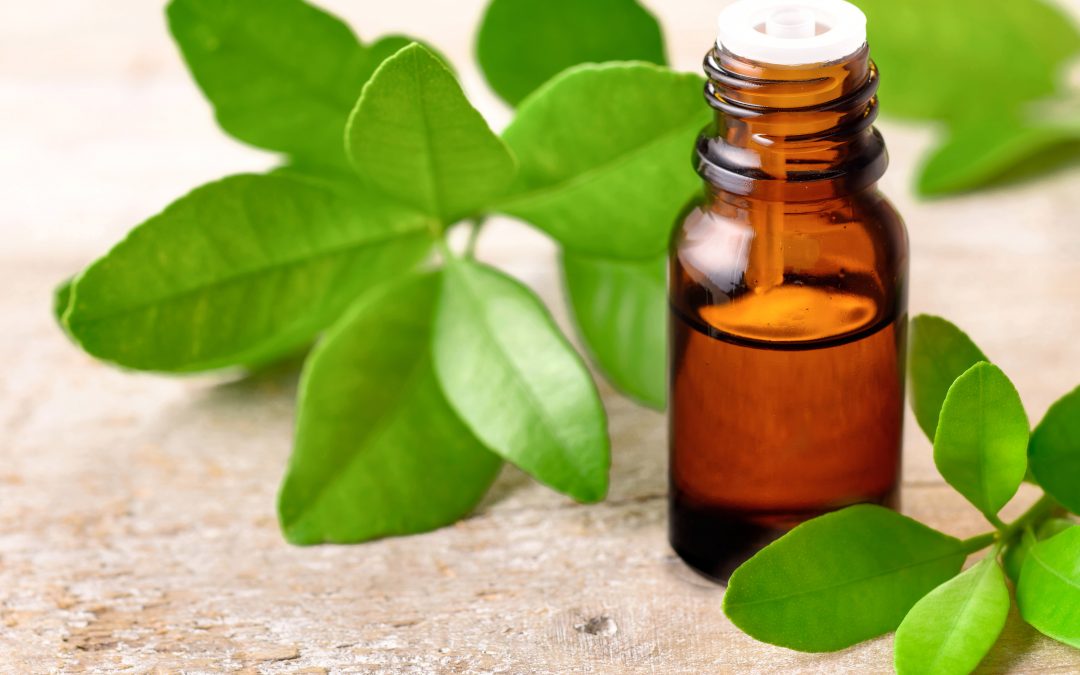
by Leslie Moldenauer | | Essential Oils, Uncategorized
Petitgrain
Botanical Name: Citrus aurantium var amara or bigardia
Aroma: Sweet and light floral aroma (Not as in your face as Neroli essential oil)
Plant Parts Used: Leaves and twigs
Method of Extraction: Steam distillation
Precautions: There are no known safety considerations for this essential oil.
Blends Well with Top 5 for Emotional Wellness: Bergamot, Lavender, Roman Chamomile, Sweet orange, and Ylang Ylang.
Aroma Mantra: With every breath, I am calming my mind
Historical Use
Historical use of the plant points us to cultures in South American and China using the leaves of the bitter orange to treat cold and flu and help with digestive complaints such as indigestion and nausea (1).
Petitgrain essential oil is used extensively in perfumery, but there are quite a few benefits to the oil, I will cover those for emotional wellness here.
What Do the Studies Tell Us?
In a study published in 2017 in the Journal of Alternative and Complementary Medicine, Petitgrain essential oil improved the mental and emotional conditions of the participants (2). Petitgrain essential oil was inhaled through diffusers while participants worked on their computers. The oil improved performance and reduced stress levels. This action was due to the constituents’ linalyl acetate, linalool, and myrcene.
Emotional Wellness
Reach for Petitgrain essential oil for a multitude of stress-related concerns and has a great ability to sooth and quiet the mind. Do you struggle with worry, overanalyzing or anxiety? When you lay down at the end of the night to sleep does your mind take you away to all of the worries in your life? If so, you owe it to yourself to try this sweet little oil. Petitgrain is the first oil I reach for when my oldest is having issues falling asleep because he cannot stop his thoughts or get a song out of his head and is feeling frustrated.
Petitgrain has an affinity for the central nervous system, therefore, when it is inhaled your pulse slows, breathing settles, and the body reverts to the parasympathetic nervous system, rest and restore mode. Place it in your diffuser before you lay down at night. Put some in an aromatherapy inhaler when you need to focus. Petitgrain essential oil is definitely your ally here.
What Other Professionals Say
According to long-standing aromatherapist Patricia Davis, “Where Neroli evokes the highest psychic or spiritual levels of mind, Petitgrain relates more to the conscious, intellectual mind. Inhale this oil when you need mental clarity (3).”
Kurt Schnaubelt states that “Petitgrain essential oil is non-toxic and can be used liberally in preparations used to address stress and imbalance of the autonomic nervous system (4).”
Julia Lawless recommends blending with Petitgrain bigarade for the psyche for stress, tension, anxiety, and low mood (5).
Now Try This
Ready to try this oil in practice? The following blend is from my book, Aromatherapy for Kids book, but is effective for all ages (6).
Antsy Pantsy (Master Blend)
Mandarin Red 15 drops
Lavender 10 drops
Petitgrain 5 drops
Cedarwood 5 drops
You can utilize this master blend properly diluted in an inhaler, diffuser, or in an aroma bath. Store unused portions in a cool spot.
Please note that I am not a medical practitioner. The content of this website is provided for general informational purposes only and is not intended as, nor should it be considered a substitute for, professional medical advice. Do not use the information on this website for diagnosing or treating any medical or health condition. If you have or suspect you have a medical problem, promptly contact your professional healthcare provider. By using this website, you assume full responsibility and liability for your own actions.
References
(1) Decleor, Paris. Petitgrain Essential Oil. Retrieved from https://www.decleor.co.uk/blogs/petitgrain.html
(2) Huang, L., & Capdevila, L. (2017). Aromatherapy Improves Work Performance Through Balancing the Autonomic Nervous System. The Journal of Alternative and Complementary Medicine, 23(3), 214–221. doi: 10.1089/acm.2016.0061
(3) Davis, Patricia. (1996) Subtle Aromatherapy. Saffron Walden: C.W. Daniel
(4) Schnaubelt, K. (2011). The healing intelligence of essential oils: the science of advanced aromatherapy. Rochester, VT: Healing Arts Press.
(5) Rhind, J. (2016). Aromatherapeutic blending: essential oils in synergy. London: Singing Dragon.
(6) Moldenauer, L. (2017). Aromatherapy for Kids: Safe and Sound. CreateSpace Independent Publishing Platform
Want to learn more about essential oils for our Emotional Wellness? Grab my latest bestselling book here-Emotional Healing with Essential Oils: Relieve Anxiety, Stress, Depression, and Mood Imbalances Naturally











